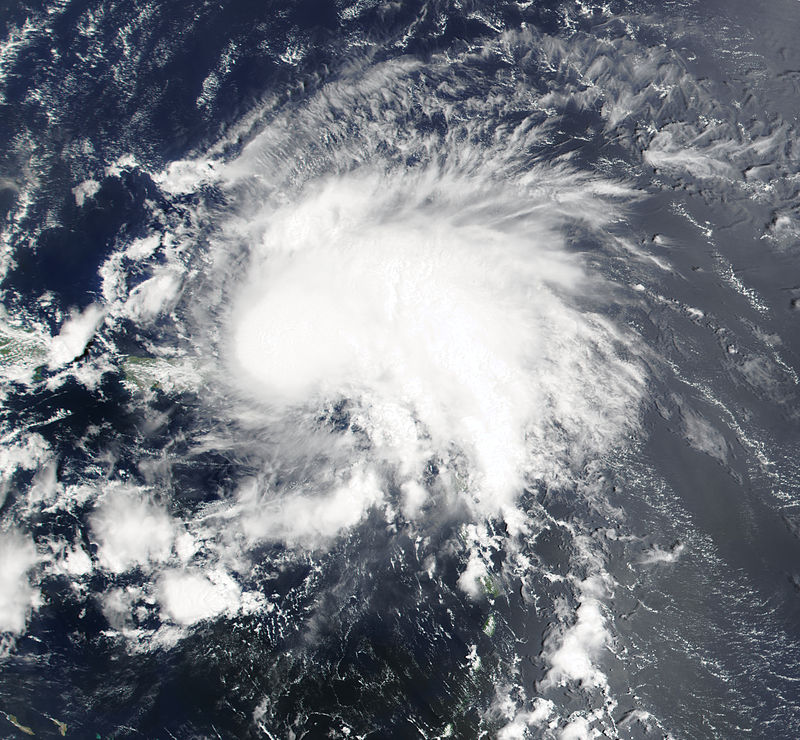Hurricane Debby, the seventh tropical cyclone, fourth named storm, and second hurricane of the 2000 hurricane season, made landfall three times in the Greater and Lesser Antilles, causing minor damage. This research article examines the effects of Hurricane Debby on various regions, detailing the damage incurred, casualties, and the subsequent cost of cleaning and rebuilding. Additionally, recommendations for hurricane preparedness in the event of a similar storm threat are provided.
Introduction: On August 19, 2000, a tropical wave east of the Lesser Antilles developed into a depression, subsequently intensifying into Tropical Storm Debby on August 20. Within 24 hours, Debby further strengthened into a hurricane, with sustained winds peaking at 85 mph (137 km/h) on August 21. The storm made landfall three times on August 22, in Barbuda, Saint Barthélemy, and Virgin Gorda, before re-entering the Atlantic north of Puerto Rico. As Debby moved parallel to the north coast of Hispaniola on August 23, it weakened back to a tropical storm. The storm then tracked westward, eventually weakening further and dissipating as a tropical depression south of eastern Cuba on August 24.
Impact on the Greater and Lesser Antilles: Hurricane Debby caused relatively minor damage across the affected regions. In Barbuda, Saint Martin, and Trinidad and Tobago, the storm brought light rainfall and gusty winds, resulting in minor damage. The United States Virgin Islands experienced brief blackouts and reported damage totaling $200,000 (2000 USD). Puerto Rico was the most severely impacted, with isolated areas receiving over 12 inches (300 mm) of rainfall. This heavy precipitation led to mudslides, flooding, and subsequent damage to infrastructure, including roads, bridges, and houses. Approximately 406 homes were flooded, with five of them suffering moderate to severe damage. In San Juan, slick roads caused numerous car accidents. Tragically, one indirect fatality occurred when a man fell off his roof while attempting to remove a satellite dish. The overall damage in Puerto Rico amounted to $501,000. In the Dominican Republic, severe flooding in the northern areas prompted the evacuation of more than 700 individuals. The storm caused approximately $35,000 in damages across the island. In Haiti, squalls tore off tin roofs from shanty homes and resulted in localized flooding. Cuba experienced relief from an eight-month-long drought due to the rainfall associated with Hurricane Debby.
Hurricane Preparedness: To be adequately prepared for a hurricane threat similar to Hurricane Debby, residents in the affected regions should take several precautions. These include monitoring weather forecasts and heeding evacuation orders if necessary. Secure loose objects and reinforce doors and windows to minimize potential damage. Have a sufficient supply of non-perishable food, water, and necessary medications. Maintain communication devices and a battery-powered radio to stay informed about emergency updates. It is also essential to have a family emergency plan in place and know the location of nearby shelters. Following these guidelines can significantly enhance personal safety and reduce the potential impact of a hurricane.
Interesting Fact: As a direct result of Hurricane Debby in 2000, Cuba experienced relief from an eight-month-long drought that had severely impacted the region. The rainfall associated with the storm provided vital water resources and alleviated agricultural challenges, benefiting both the local population and the agricultural sector.
In conclusion, Hurricane Debby, though a relatively minor storm, caused damage and disruptions in the Greater and Lesser Antilles in August 2000. Understanding the impact of such storms and adopting proper hurricane preparedness measures can help mitigate the effects of future hurricanes. By staying informed, taking necessary precautions, and having a well-prepared emergency plan, communities can minimize damage, protect lives, and enhance their resilience in the face of potential hurricanes.




Leave a Reply